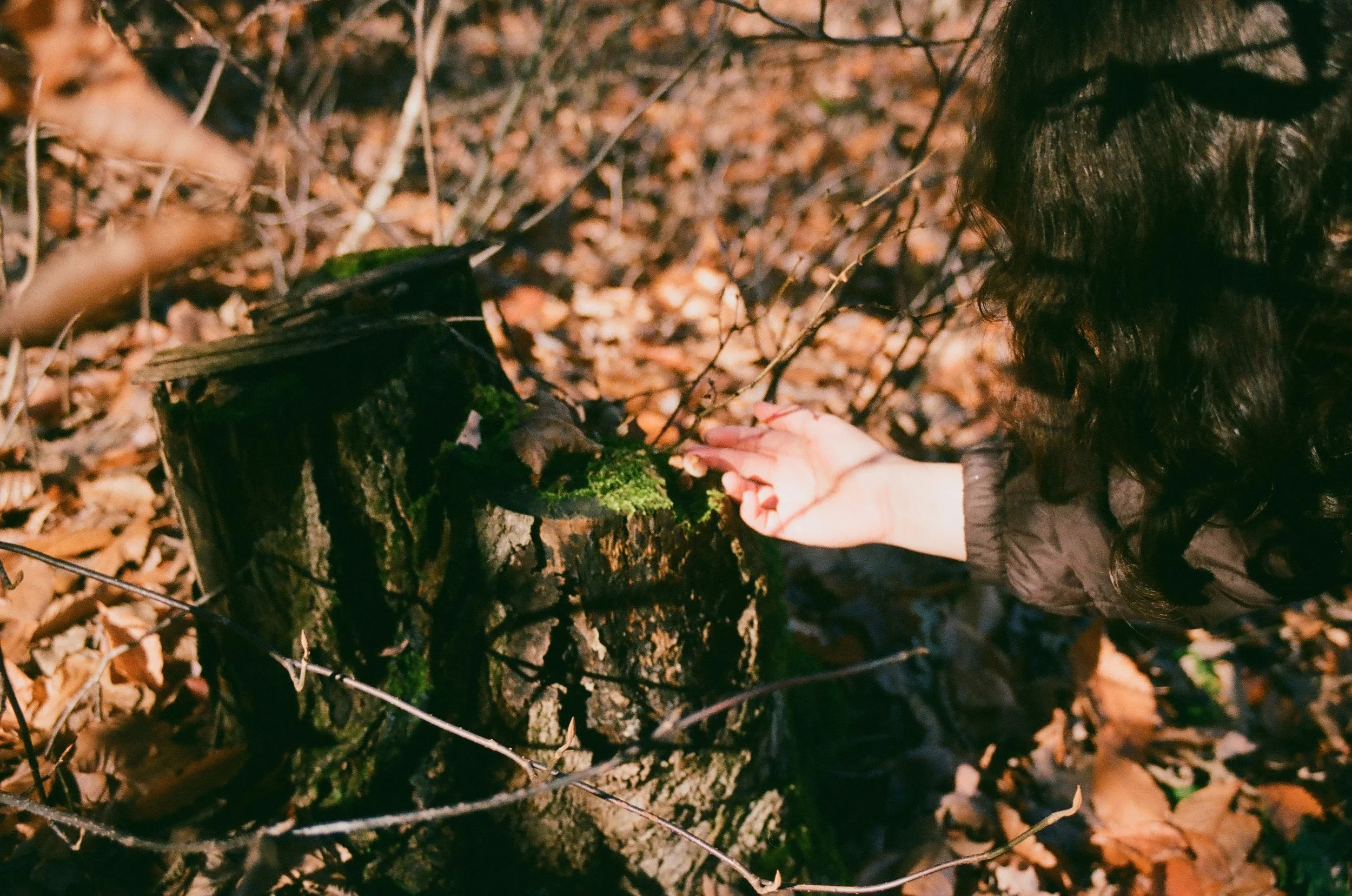What is forest therapy?
Sophie Monkman — Lanaudière, 2023
Forest therapy emerged from the Japanese practice of Shinrin-Yoku (which translates as "forest bathing") and focuses on experiencing and engaging with forest environments in an intentional, sensorial way.
Forest therapy is a slow, restorative, evidence-based practice predicated on exploring sensory input in forest environments (or any natural environment) in order to develop more authentic relationships with the more-than-human world.
Individuals are guided through a series of sensory-based activities that help them slow down and pay attention differently to the world around them. It is not a hike, nor a guided meditation, and focuses on fully experiencing “here” versus arriving “somewhere else”.
Exploring the more-than-human world on a forest therapy walk often leads to a quieted mind and calm nervous system (among many other benefits here). It may also result in strengthened relationships with ourselves, others, and the web of life that supports us.
Essential elements of forest therapy:
Sensorial and embodied
Slowing down physically
Being in the present moment
Orienting to pleasure
Allowing a childlike sense of curiosity and wonder to guide you
Considering an animistic worldview
Sharing our noticings with others
As a forest therapy guide, I help participants to deepen their connection with their environment, and therefore discover — on their own terms — the therapeutic benefits therein.
Forest therapy lies at the intersection of science, medicine, ecopsychology, indigenous ways of relating to the more-than-human world (more on that below), mindfulness practices, and tuning into our innate ways of relating to, and being in connection with the natural world.
“To not allow otherness to bar the door to kinship, curiosity, and imagination. There is a bridge and it is made by the gift of attention.
”
Roots of Forest Therapy
Forest therapy is founded on the Japanese practice of Shinrin-Yoku (pronounced sheen-deen yoh-koo), which translates directly as "forest bathing". Shinrin-Yoku began in Japan in the early 1980's as a response to the high levels of stress and overwork in the population, and was supported by the emergence of scientific literature at the time about the therapeutic and stress-relieving benefits of spending time in nature. It has become a well-established preventive health and wellness practice in Japan — with over 60 designated forest bathing trails — and has spread and evolved all over the world.
The influence of Buddhism and Shintoism — Japan’s two major religions — are alive within the practice, such as considering the forests as mystical places, and seeing and believing in the animacy of the natural world. That is, that all life on earth is indeed living, sentient, possesses its own kind of intelligence, and should be respected and engaged with in right relationship.
This animistic worldview is typical to indigenous cultures the world over, and while being a new practice in some ways, forest therapy reflects this fundamental and ancient way of connecting to our earth. In practicing forest therapy through the lineage of the Global Institute of Forest Therapy, I acknowledge the wisdom traditions and knowledge keepers who have generously shared their teachings, and which have helped inform this practice. Indigenous peoples — with their wisdom of engagement with the more-than-human world spanning tens of thousands of years — are critical to the paradigmatic shifts that are needed in how we relate to each other and our earth at this most pressing time, and must be at the forefront of the wisdom needed for this age. While earth is our shared home, and we are all indigenous to her, we have forgotten the ways in which to remember, live, and honour this. Forest therapy is one avenue.
Nature healing and justice, and cultural healing and justice go hand in hand. It is for this reason that, since 2019, 5% of proceeds from each walk have been, and will continue to be donated to the Native Women’s Shelter of Montreal, a vital organization that supports Indigenous women and children living in Tiotiah:ke / Montreal.
For more thoughts and resources on race, whiteness, and privilege within the nature connection and environmental fields, check out a short essay I wrote here.
“The times are urgent; Let us slow down.”

